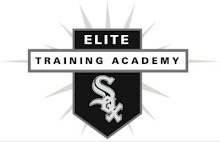Ok I'll admit, although I work for the White Sox, I've been a lifelong Cardinals fan. With that being said, players that work with me probably get tired of me talking about Albert Pujols in regards to the swing. One of the things I've been happiest with in talking to my players recently, is how successful their approaches have been at the plate.
There is much more to hitting than mechanics. Players need to understand their strengths and weaknesses, what a pitcher is trying to do to them to get them out, situations, and also how the count affects what they are looking for. Anyone that follows baseball knows the terror Pujols has been on to start the season. When I'm not working, I try to watch as many at bats of his as possible. One thing that I've noticed of Pujols, like most hitters who are in hot streaks, is he is not hitting out of his "zone."
"Zone" hitting simply means that a hitter does not have to cover all 17 inches of home plate all the time. No player is good enough to cover that much of home plate successfully. What hitters need to do is seperate what they consider their "hitter's pitch" from the "pitcher's pitch." If hitter's are patient enough to stay in their "zone" until they get two strikes on them, they are going to find that ball in the middle of the plate eventually. Here is how I know this. No pitcher at the ameatuer level is going to throw three balls on a corner in one at bat. I know this becauase big league pitchers can't do it either. The closest guy to doing so was Greg Maddux, which was why he was still pitching in the big leagues throwing 83mph at the end of his career. That being said, there will be a hitter's pitch in every at bat, or the pitcher walked the hitter. Hitter's just have to be patient enough to get that pitch. It may be the first pitch of the at-bat, or it may not be until later in the at bat, but in any case it will be there.
That is what has made Pujols so good so far this year, and in his entire career. He simply doesn't give in to the pitcher on a "pitcher's pitch." This makes the pitcher either force something into the heart of the plate, or walk Pujols. And Pujols has been patient enough to take his walks. Pitchers often comment that there is no one way to pitch to Pujols and I believe that is true. When Pujols has struggled in short stints in the past, it is because he finds himself trying to do too much and he begins chasing "pitcher's pitches" thus getting himself out. This is no different than most big league hitters. When they stay in their "zone" and try not to do too much, they hit "hitter's pitches." When they chase, they struggle, making their hitting zone much too large and too hard to cover and getting themselves out. Bonds and Manny (Steroids Aside) were also great at this. Here is a great quote by Manny in a recent ESPN article, talking about the pitch on the inner third of the plate, "I don't swing at that pitch unless I've got two strikes. And then I just try to foul it off." What Manny is saying, is the inner third is not a "hitter's pitch" for him, so he lets it go until he has to hit it.
A simple generic approach I have taught my hitters that they have raved about to start their seasons is that early or up in the count 0-0, 1-0, 2-0 or 3-1 I'm looking in a general area 3 or 4 baseball's in width. As I add a strike, 0-1, 1-1, 2-1 we add a baseball on each side, which is still excluding the corners (pitcher's pitches). Of course with two strikes, we have to cover the plate, plus some, and our approach takes us to looking for the fastball away. This general approach has slight changes from person to person based on their individual strengths and weaknesses. There are a dozen drills that we do working on this specific approach. I know it works, based on the feedback from my students and from watching Pujols tear the cover off the ball to start the year! The bottom line is that a "hitter's pitch" is something a hitter should hit hard 7/10 times while "pitcher's pitches" we may only hit hard 1 or 2 out of 10 times. What balls should hitter's be attacking? If a hitter can learn to stay in their "zone", hitting becomes a lot easier.
Friday, May 8, 2009
Subscribe to:
Posts (Atom)

